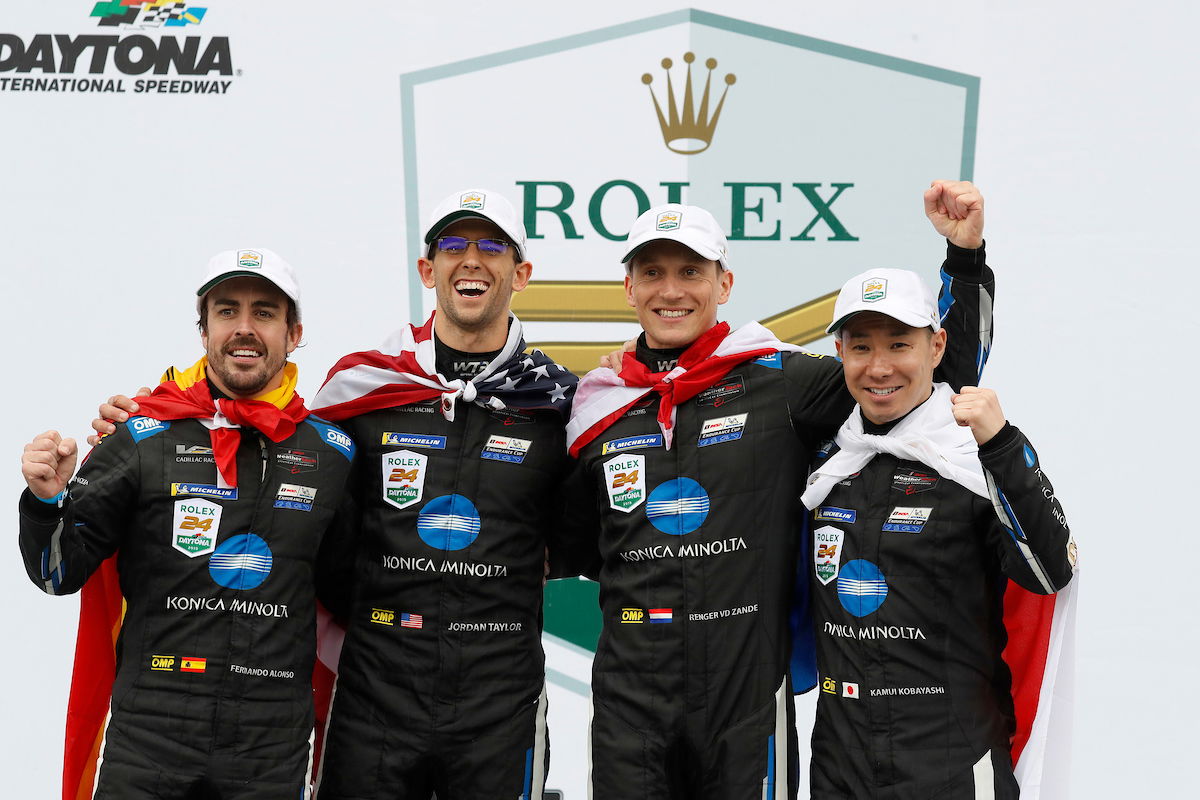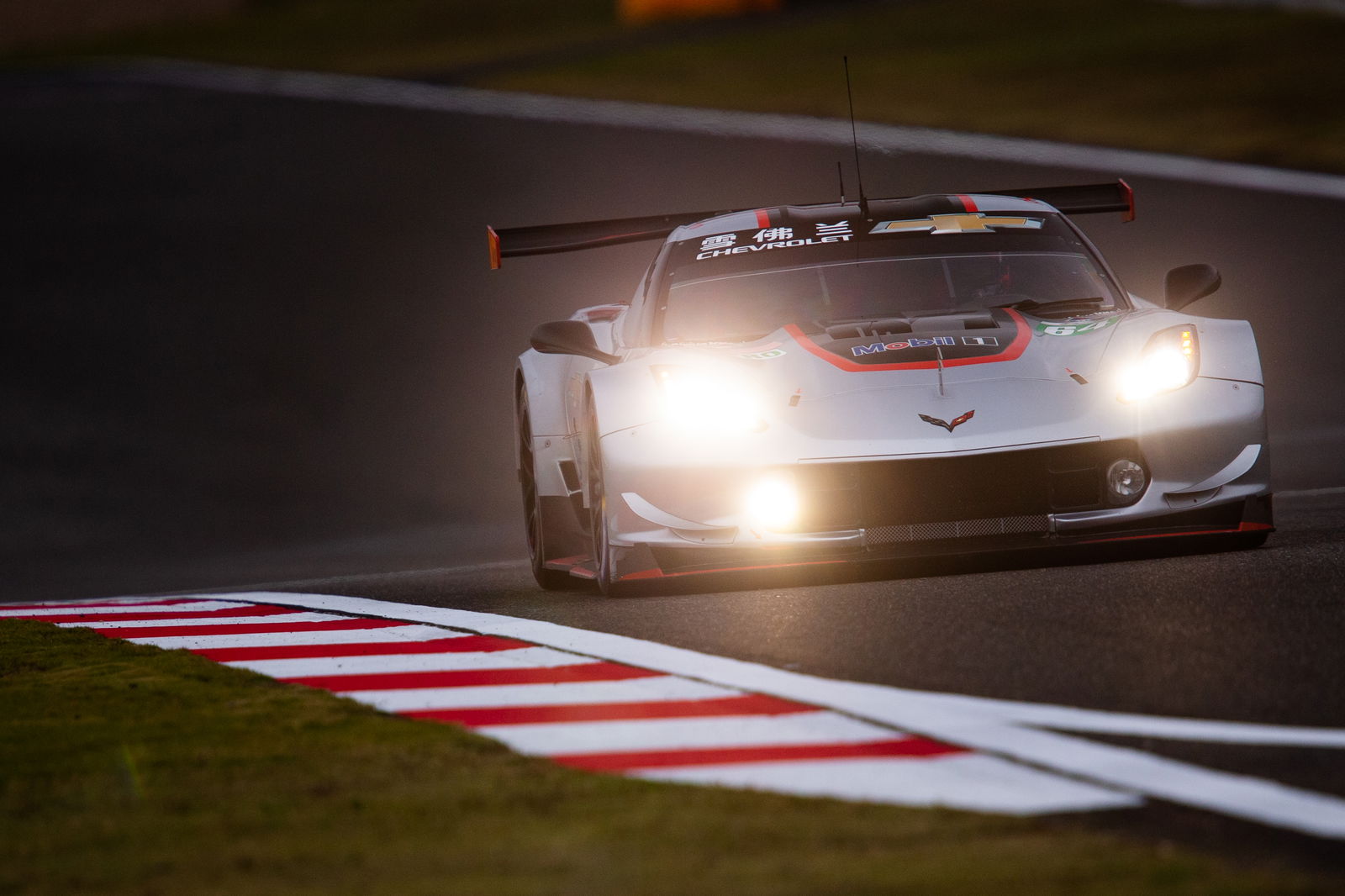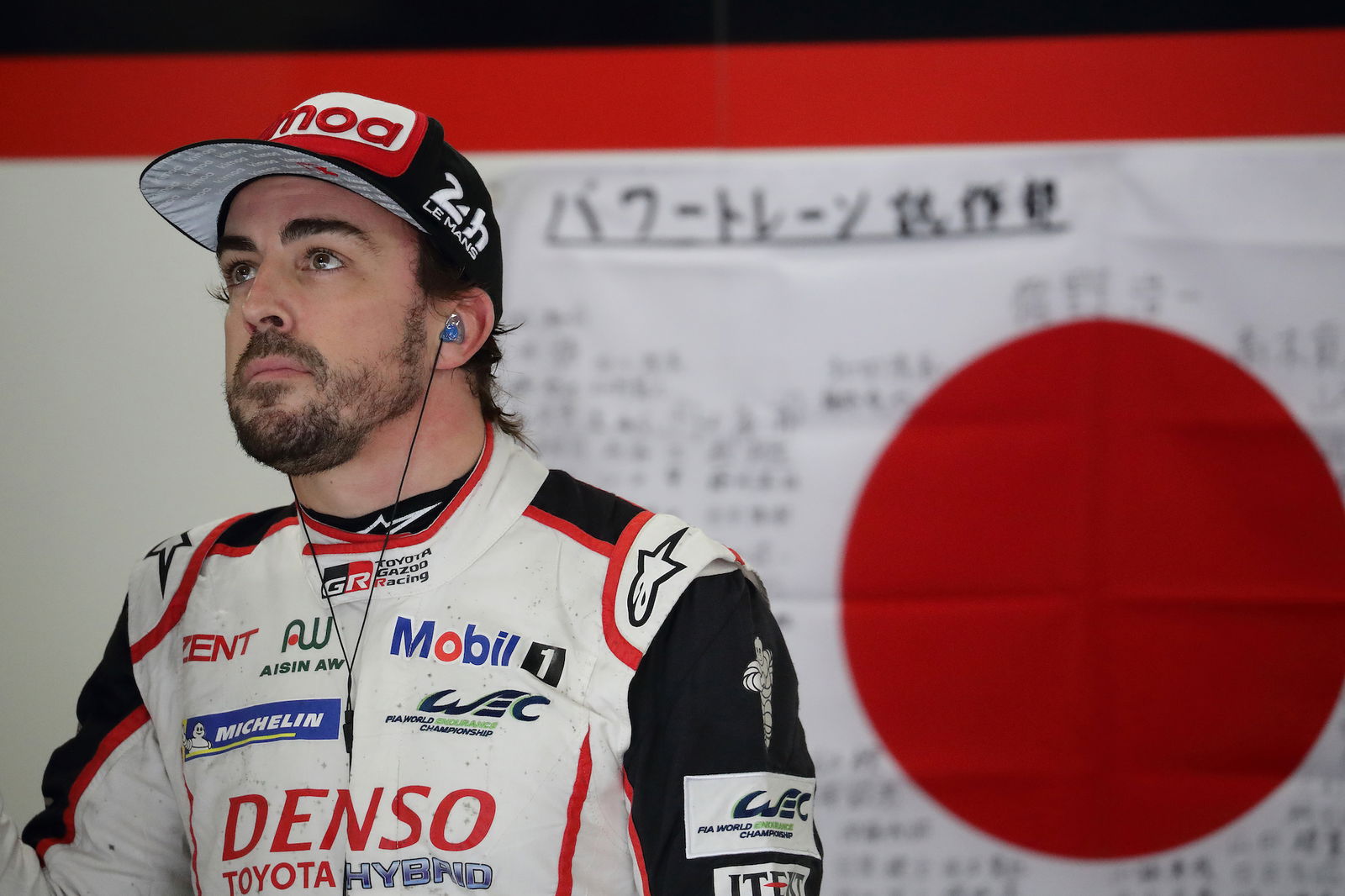Why Alonso’s starring role at Daytona was one of his finest hours
Just minutes after the chequered flag was waved to prematurely end a wet-and-wild 57th edition of the Rolex 24 at Daytona on Sunday, the criticism over how the on-the-flag reports were angled began to emerge.
Fernando Alonso had just won the Rolex 24. Fact. So had his three Wayne Taylor Racing co-drivers, Jordan Taylor, Kamui Kobayashi and Renger van der Zande. Fact. Yet it was obvious who the headlines and post-race coverage would revolve around.

Just minutes after the chequered flag was waved to prematurely end a wet-and-wild 57th edition of the Rolex 24 at Daytona on Sunday, the criticism over how the on-the-flag reports were angled began to emerge.
Fernando Alonso had just won the Rolex 24. Fact. So had his three Wayne Taylor Racing co-drivers, Jordan Taylor, Kamui Kobayashi and Renger van der Zande. Fact. Yet it was obvious who the headlines and post-race coverage would revolve around.
We made sure to highlight the efforts of Taylor, Kobayashi and van der Zande in our race report. All three played a crucial role in keeping the #10 Konica Minolta Cadillac DPi in contention for victory through a race where mistakes were easy and frequent. But the star performance Alonso had put in was undeniable. (Much as the Spaniard himself had been overshadowed by Lando Norris in the 2018 edition of the race.)
In fact, it may well be one of the finest hours of Alonso’s long and successful career in racing.
The regularity of caution periods through the Rolex 24 last weekend – 126 out of the race’s 593 laps were behind the Safety Car – made it difficult for the front-runners to really stand out or forge much of an advantage. The usual gaggle of DPi cars from Wayne Taylor Racing, Acura Team Penske and Mazda Team Joest traded the lead back and forth, rarely any more than a few seconds clear of the pack before a Full Course Yellow would bunch them again.
Reliability slips firstly knocked both Mazdas out of contention before one of the Acuras was sidelined after the morning rain, meaning that come the final run to the flag, there were three cars in the mix: the WTR Cadillac with Alonso on board; Action Express Racing’s #31 Cadillac, driven by Felipe Nasr; and Penske’s Alexander Rossi in the #6 Acura.
Looking at it in a rather banal way, Alonso won a three-car fight against two ex-F1 backmarkers in a shortened contest. But a dive into the numbers from Daytona proves just how outstanding his performance.
Alonso and Jordan Taylor were the only members of the WTR crew to complete three stints behind the wheel of the #10 Cadillac. Kobayashi spent less than three hours in the car, manging one four-leg stint, while van der Zande a five-leg 3h23 run through the night, keeping them in contention at the front.
Come the morning rain, instead of sticking in a fresher Kobayashi or van der Zande, WTR ran both Taylor and Alonso, with the latter making the race-winning move with three laps to go.
When Alonso hopped in for the final time, he had already completed a little over six hours in the car (officially 7h39m, but 90 minutes of that was under a red flag). To stick him back in for what was set to be a near-three-hour stint to the finish was bold – but Alonso’s pace had convinced team owner Wayne Taylor he was the right man to carry it home.
Signs of just how quick Alonso was came in his first stint. The opening salvo of the race had seen the Acuras and Penskes trade blows at the front, with the WTR-Cadillac hovering on the fringes of the top five. With nearly two hours complete, it nevertheless sat just eight seconds back from the lead thanks to the regular caution periods, with Alonso taking over on Lap 62 when the car ran in P9 under an FCY.
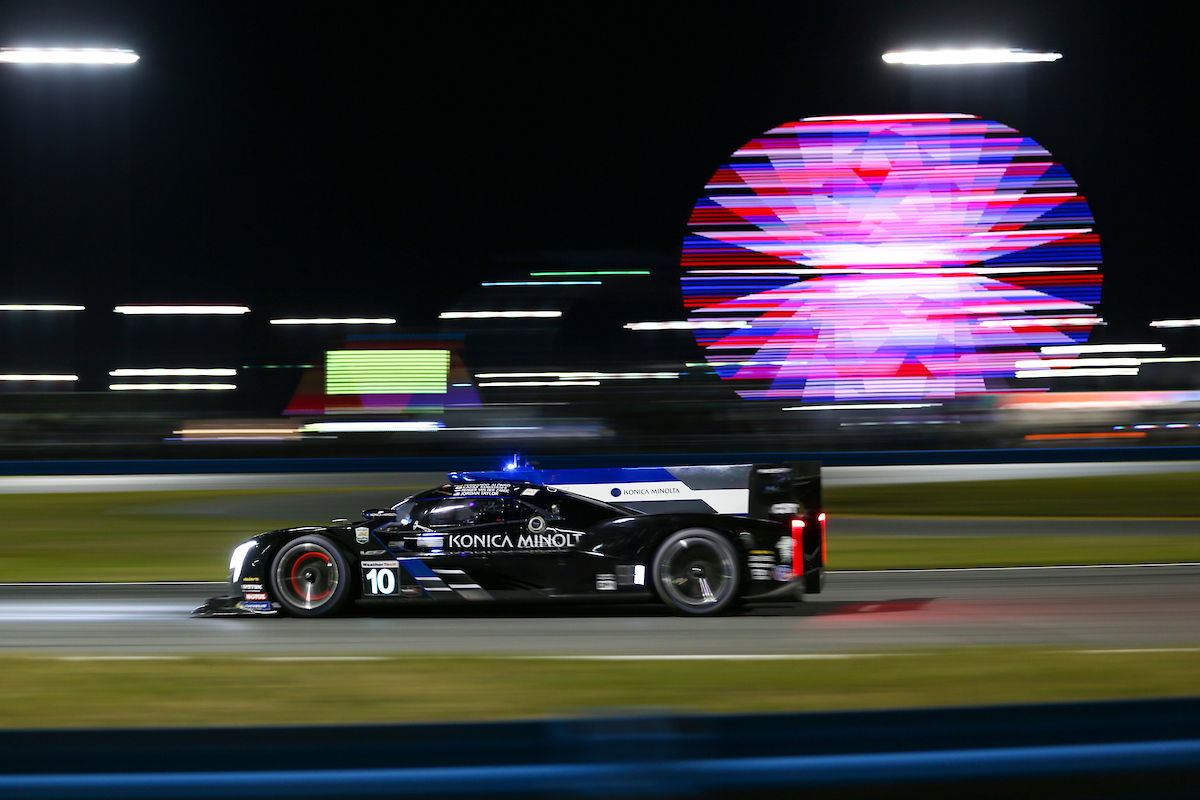
Alonso swiftly moved up to sixth before finding his feet, keeping the lead runners within sight. He took P5 before another FCY was called shortly before his second pit stop, with the race returning to green on Lap 99.
On Lap 102, Alonso took P4.
On Lap 104, P3.
Lap 110, P2.
And finally, on Lap 112, Fernando Alonso took the lead of the Rolex 24 at Daytona.
In a field of experienced sports car drivers, and in only his third 24-hour race, Alonso wasn’t messing about. But the true magic was still to come.
Because as the chasing cars – at this stage, the #77 Mazda and the two Penske-run Acuras – tried to keep up despite heavy traffic, Alonso was able to push ahead with remarkable consistency.
Five laps within four-tenths of a second of each other saw Alonso’s lead grow to six seconds before he came in for another stop, after which he again stretched his legs, pulling away at a rate of two seconds per lap.
By the time the next FCY was called, Alonso’s lead was nearly 21 seconds. All of his hard work was wiped away by the Safety Car, but he didn’t let any possible frustration get to him. In the final leg of his opening stint, Alonso pulled out almost the same gap again, handing the car over to Kobayashi on Lap 155 with an advantage of 19.8 seconds.
Alonso had turned an eight-second, seven-car deficit into a 20-second lead – twice – in the space of under three hours.
Cautions through the night kept the leaders tightly-bunched, with both Acuras and the Action Express Racing Cadillac still in contention at that point. When Alonso returned to the car (one would imagine after some rest) on Lap 468 for his second stint, he sat third in class, but returned to the lead at the next cycle of pit stops nearing the end of the 15th hour – just as the rain started to come down.
Alonso himself held great uncertainties about his ability in the rain through much of his F1 career. But you wouldn’t have thought so watching him work through the spray at Daytona.
If the rate at which he had peeled away from the field earlier was impressive, this hit another level. A brief caution from Lap 478 to Lap 485 ended with Alonso leading the field away, eager to rebuild some of the advantage he’d held earlier in the race.
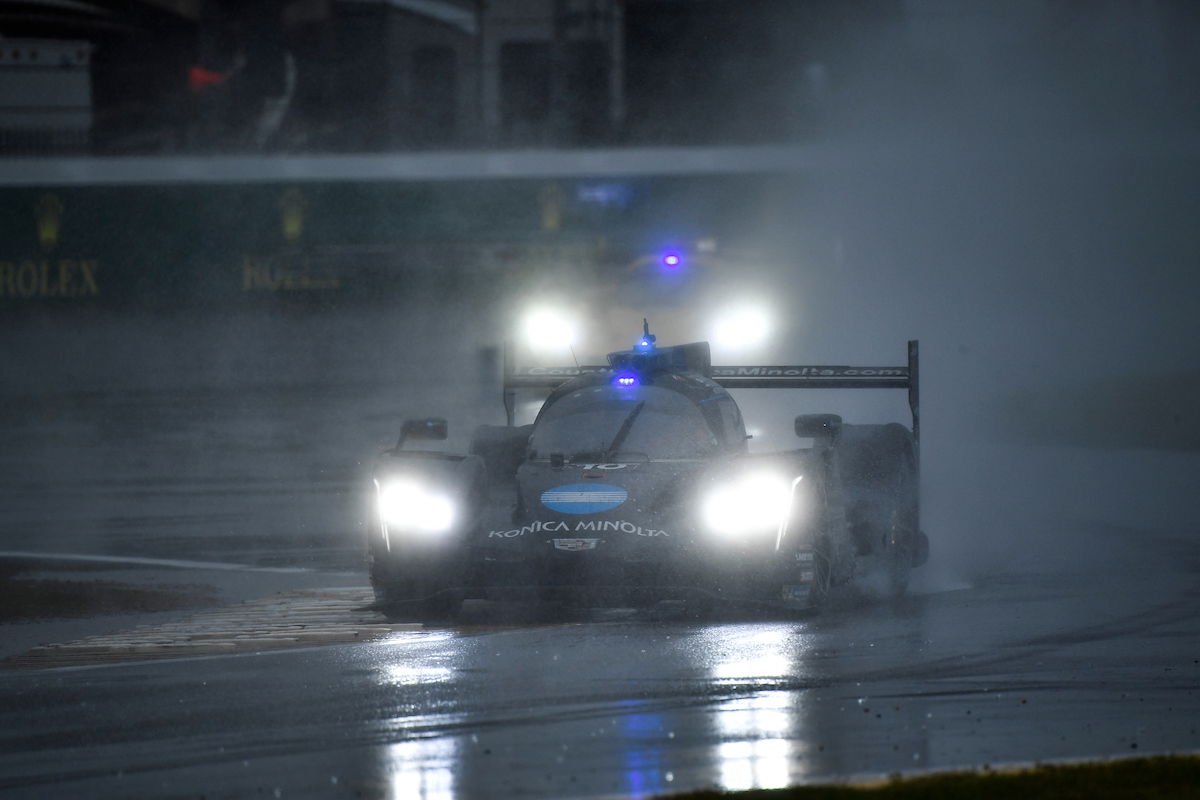
And again, he was remarkably consistent. As others struggled to keep their cars on-track, Alonso scythed through the traffic. Four laps into the stint, he was 10 seconds ahead. Another five in the book, and he was 20 seconds up the road. It took him only a further seven laps to double that lead.
Once the rain had become heavy enough to warrant an FCY that would ultimately become a red flag, Alonso’s lead was 49 seconds. It was meaningless once the Safety Car came out, but nevertheless, a hugely impressive job.
It may well have swayed the team in its final driver call. Once the race got back underway after a 90-minute red flag, Alonso handed the car over to Taylor under the FCY. 2017 Rolex 24 winner Taylor stayed strong at the front, making a key pass on Nasr towards the end of his stint as a fresh front of heavy rain began to near Daytona International Speedway.
While there were three hours left on the clock when Taylor jumped out of the car, there would actually only be a handful of racing laps left. Most of the teams were acute of the fact the heavy rain could call this race early, meaning they could not afford to play the waiting game. If they were going to get a pass done, it was now or never.
Alonso was entrusted with the final stint, getting back in the #10 Cadillac under an FCY. The first attempt to return to green lasted just a single lap before the next incident, but a final spurt to the flag followed two laps later. Nasr led from Alonso and Rossi, the trio nose-to-tail on the restart heading into the rising tide of water at Turn 1.
Avoiding mistakes was difficult, Alonso himself even running wide on Lap 589 to give Nasr four seconds of breathing room at the front. But he quickly bounced back to hound the Brazilian for the position, having long left Rossi behind after an error.
Nasr held firm at first, but on Lap 591, he made the error that cost him the race. The Cadillac jutted wide at Turn 1, forcing Nasr to turn right and loop his car back around. Alonso – who had just moments earlier been yelling over team radio that they had to stop the race – now led the way.
Two more laps of green flag running were all Alonso had to survive - his lead extended out to over 11 seconds in that spell - before the red flag finally came, curtailing a dramatic Rolex 24 with two hours still on the clock.
“I think the last five or seven laps of the race were not, I think, right for anyone that we were on track, because the visibility was nearly zero,” Alonso said. “I was calling the team for a safety car immediately because I could not see anything.”
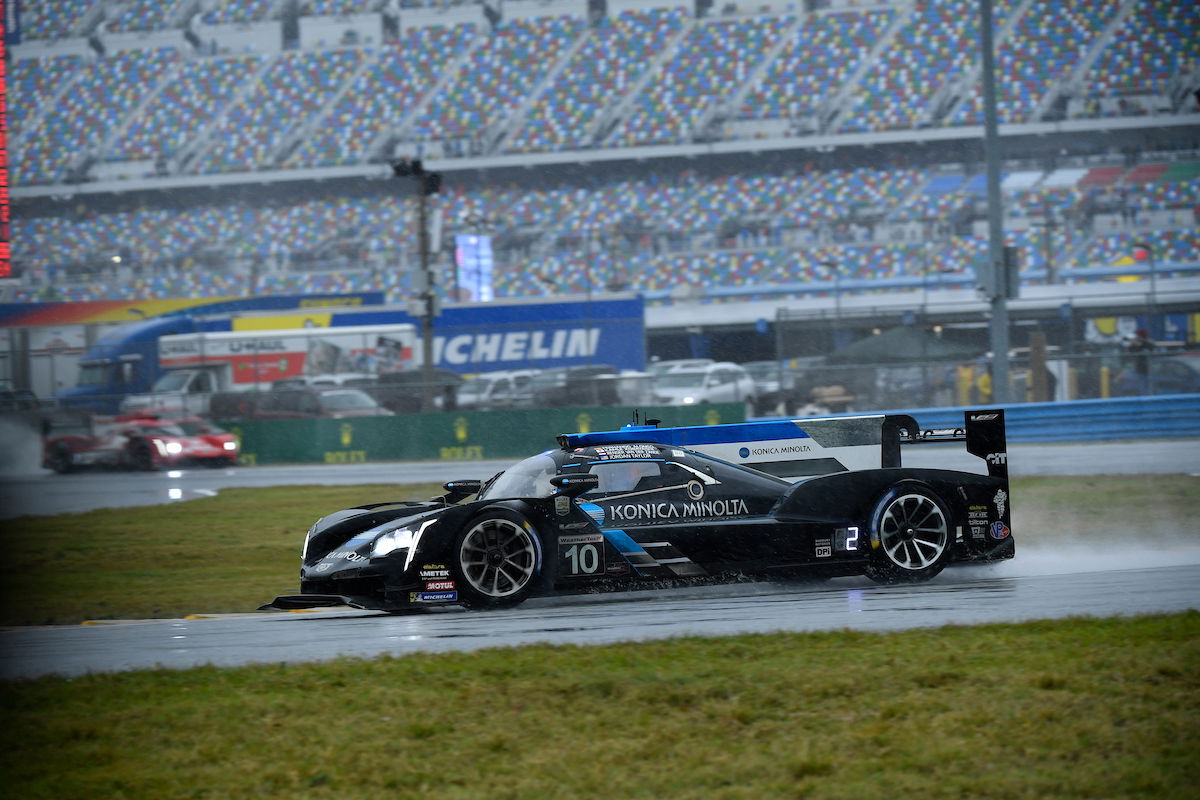
They were treacherous conditions, but Alonso had held his nerve with aplomb. While others had cracked under the pressure, he proved why he is revered as one of the greatest racing drivers on the planet right now.
It was a timely reminder from a driver whose greatness has been hard to see so clearly in recent times. His 24 Hours of Le Mans victory came complete with a magnificent overnight stint, yet in reality, he faced opposition from just one car (even if he said otherwise). In F1, he has been dragging sub-standard cars further up the grid than they deserve to be for the best part of a decade, but the recent heights of P5 or P6 are difficult to dress up.
But at Daytona last weekend, we saw Alonso’s greatness on full display. His adventure into other formats of racing has been stimulated by a desire to prove he deserves a place among the top table of racers, even if he only has two F1 titles to his name. He wants to prove himself as a multi-disciplinarian, capable of racing anything, anywhere – and winning.
Forget him being the F1 star, the triple crown heir presumptive, the Le Mans winner. In the microcosm of the sodden Rolex 24 last weekend, Alonso was simply outstanding. And his heroics deserve to be recognised.
